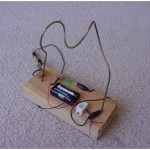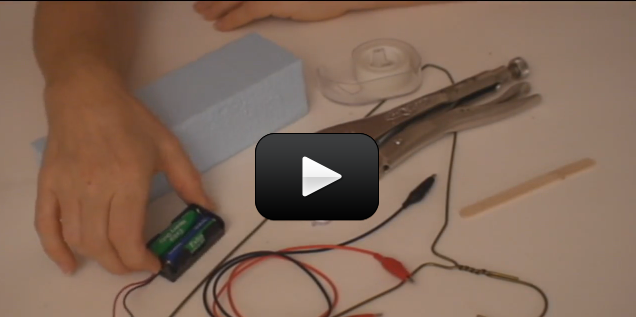 Electrical circuits are used for all kinds of applications, from blenders to hair dryers to cars. And games! Here’s a quick and easy game using the principles of conductivity.
Electrical circuits are used for all kinds of applications, from blenders to hair dryers to cars. And games! Here’s a quick and easy game using the principles of conductivity.
This experiment is a test of your nerves and skill to see if you can complete the roller coaster circuit and make it from one end to the other. You can opt to make a noisy version (more fun) or a silent version (for stealth). Are you ready?
Please login or register to read the rest of this content.


Hi John,
Great question! Yes, you’ll want to make the relay shocker project in Unit 11, and there’s a whole section on static electricity experiments coming in e-Camp soon that you’ll really enjoy. If you haven’t already, you’ll want to learn about volts and amps, and how they relate to each other in terms of human safety using the water pipe analogy. There’s a video in Unit 10 on this that you should view.
Hi Aurora,
My name is John Cloer. I watched this video and immediately began to think of how to make it like those old carnival games that give you a little shock. I wanted to be safe so I was wondering if I could ask you what voltage rating should I use to give me a safe yet fun little jolt? I was also wondering if you had any suggestions on the way it should be designed?
I’ve finally had a go at this after having a lot of trouble finding the parts, and it’s so much fun! I hooked it up with both an LED and buzzer in parallel. My dad tried this, and it was an EPIC FAIL!!! My mum, on the other hand, managed to do it both ways. I managed to do it with only a couple of buzzes and flashes!
Laura
Sure! Try it! 🙂 Try hooking them up in series and parallel and see which works better.
Could you use both an LED and buzzer at the same time?
Thank you
Laura
I know Radio Shack carries them sometimes, but often they have a screw-on case. You’ll find snap-on kinds with a 9V battery clip adapter on top, but then you’ll also need to get the 9V clip as well.
Do you know where I can find battery cases like the one(s) you use?
Thank you!
-Steph